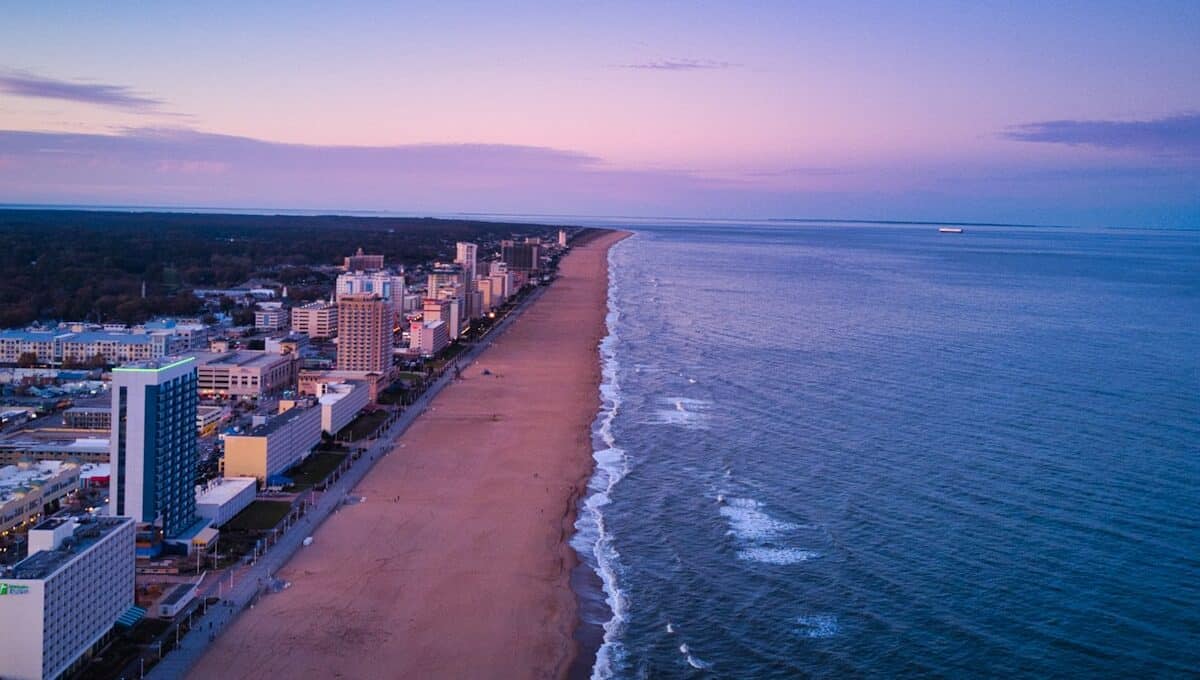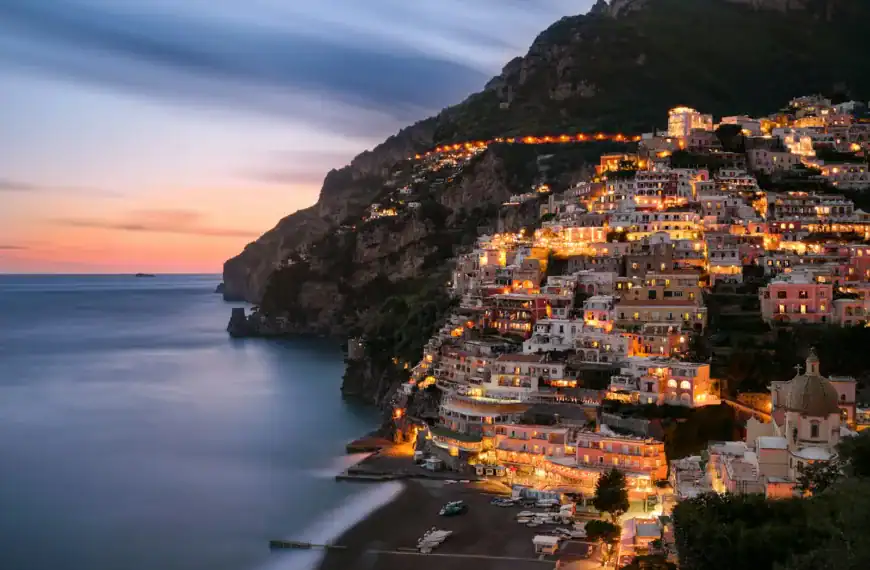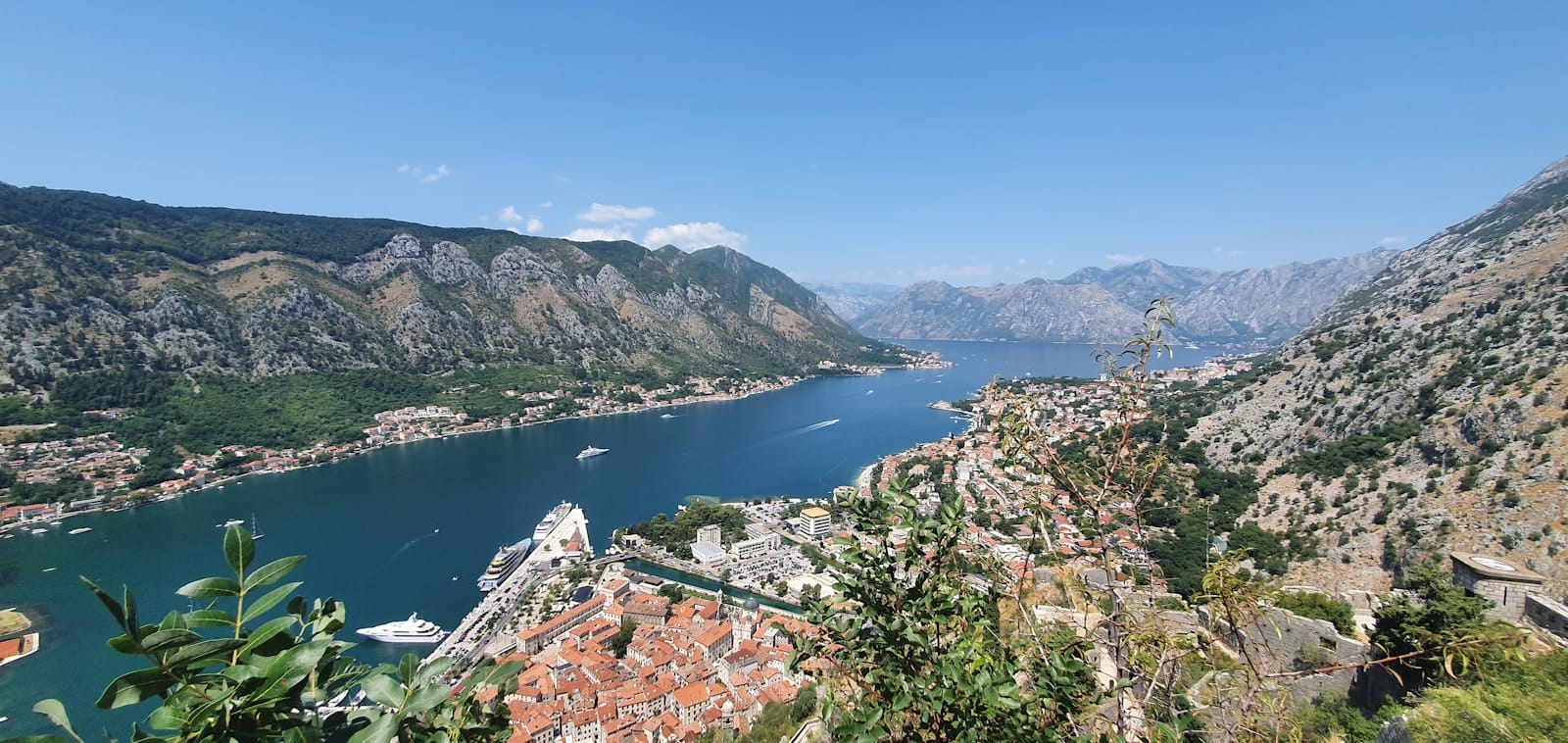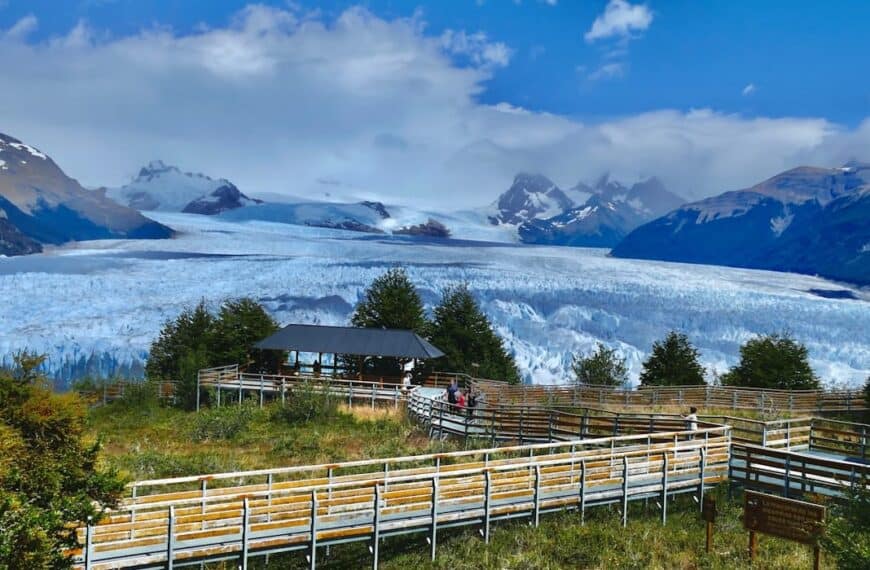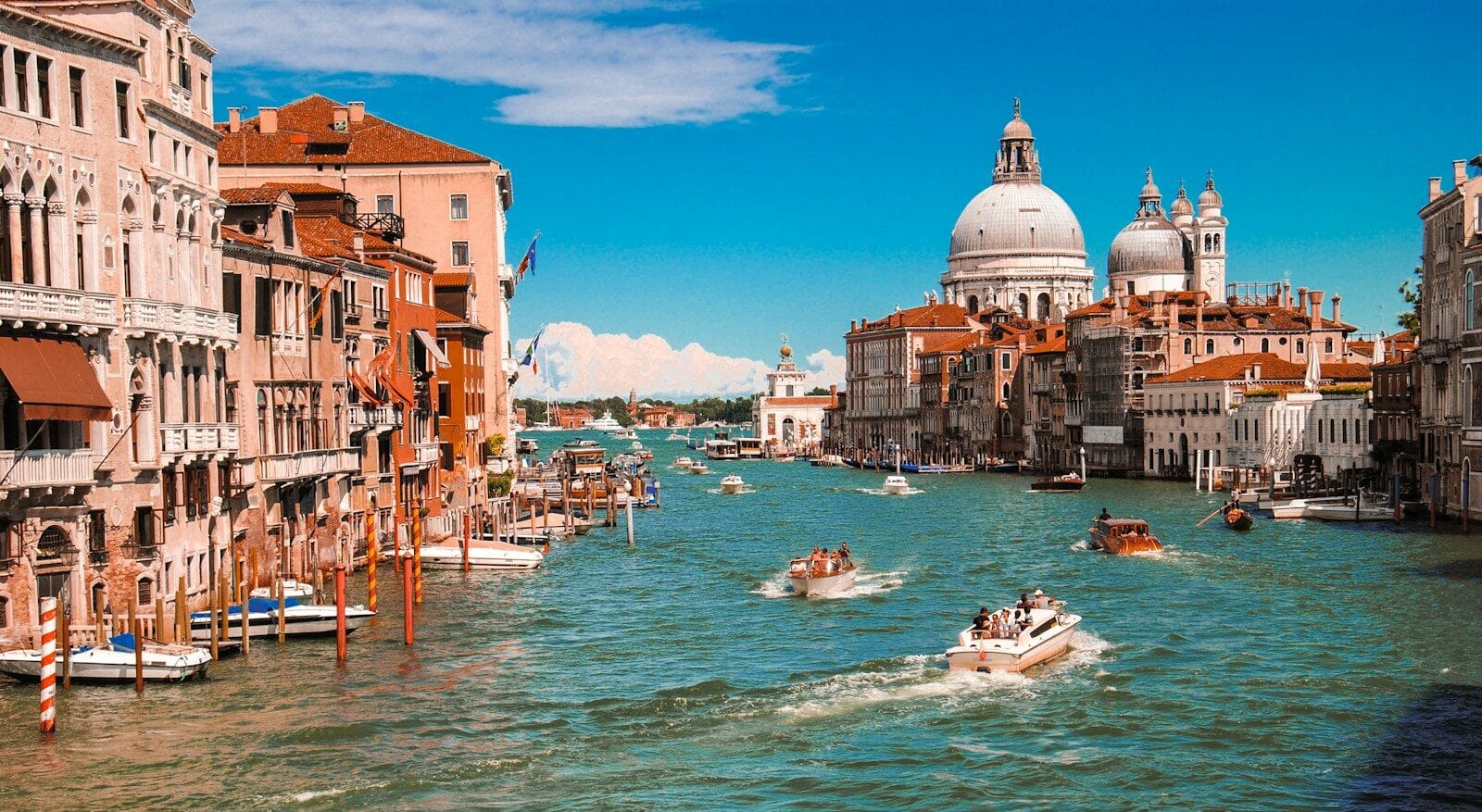Virginia Travel Guide: Colonial Charm Meets Natural Wonder
Intro to Virginia Travel Guide
Virginia is where the Blue Ridge meets the Chesapeake, and U.S. history echoes in every colonial town square. From misty Appalachian trails to Atlantic beach escapes, this southeastern state offers a deeply layered journey through nature, culture, and heritage.
Start your journey with our Virginia Travel Guide and discover everything this region has to offer — from Civil War sites and wine country retreats to vibrant cities and coastal boardwalks.
💡Quick Facts:
Continent: North America
Country: United States
Administrative Division: State
Capital: Richmond
Area: 42,775 mi² (110,785 km²)
Population: ~8.7 million
Density: ~203/sq mi
Regions/Subregions: Northern Virginia, Tidewater, Piedmont, Blue Ridge, Valley & Ridge, Appalachian Plateau
Official Language: English
Currency: U.S. Dollar (USD)
Time Zones: Eastern Time (UTC-5, UTC-4 DST)
Airports: Dulles (IAD), Richmond (RIC), Norfolk (ORF), Roanoke (ROA)
Climate: Humid subtropical to humid continental in mountains
Known For: Colonial Williamsburg, Shenandoah National Park, Blue Ridge Parkway, U.S. history, wine trails
🛂Arrival Info:
Entry Requirements: Same as U.S. federal (see Washington, D.C. section)
Main Port of Entry: Dulles International Airport (IAD)
Visa-Free Countries: Under VWP (ESTA required)
Max Stay: 90 days for ESTA; varies for visa holders
Official Travel Info: U.S. CBP
💉Health Info:
Vaccinations: Routine U.S. vaccine schedule; COVID-19 recommended
Healthcare: Accessible in all cities; rural care may be limited
Hospitals: UVA Health, VCU Medical Center, Sentara, Inova Fairfax
Travel Insurance: Strongly advised
✅ Check travel insurance options for travel emergencies, delays, and medical needs abroad — Get coverage here
✅ Stay Informed with Official Updates: WHO – International Travel & Health | CDC – Travel health updates
🚨Travel Advisory:
Safety Level: Normal precautions
Local Risks: Storm-related flooding, traffic congestion (e.g., I-95 corridor)
Civil Rights Notes: Strong protections; open-carry laws vary by area
✅ Stay Informed with Official Updates: US Travel Advisory | UK Foreign Travel Advice
📅Holidays:
National Holidays:
– Independence Day (July 4)
– Thanksgiving (4th Thurs in Nov)
– Labor Day (1st Mon in Sep)
Local Events:
– Virginia Wine Month (Oct)
– Shenandoah Apple Blossom Festival (May)
– Neptune Festival in Virginia Beach (Sep)
Seasonal Closures: Some mountain roads closed in winter (e.g., Skyline Drive sections)
💰Visitor Info:
Currency: U.S. Dollar (USD)
ATMs: Widespread
Card Usage: Nearly universal
Tipping: 15–20% standard
Tourist Fees: Some state park entry fees
Daily Budget:
– Budget: $80–$120
– Midrange: $150–$250
– Luxury: $300+
✈️Airports:
Major Airports:
– Dulles International (IAD) – serves Northern Virginia/DC
– Richmond International (RIC) – central access
– Norfolk International (ORF) – eastern coast
– Roanoke-Blacksburg Regional (ROA) – southwest
Budget & Regional Airports: Charlottesville-Albemarle (CHO), Newport News/Williamsburg (PHF)
✅ Delayed or canceled flight? Check if you’re eligible for compensation
🚍Transport:
Car Rentals: Recommended for rural travel
Public Transport: Metro only in Northern Virginia (part of WMATA); local buses in cities
Intercity Rail: Amtrak service across the state
Driving Laws: Right-hand drive; IDP not required for most travelers
Transit Passes: WMATA SmarTrip in NOVA
Common Scams: Few; occasional fake parking signs in tourist areas
✅ Book reliable airport transfers and in-city rides in advance. Reserve your ride here
📶Connectivity:
SIM Cards: Available at airports and stores (T-Mobile, Verizon, AT&T)
Mobile Coverage: Strong in urban and suburban zones; spotty in mountainous or rural areas
Wi-Fi: Good in hotels, restaurants, libraries, and many parks
✅ Stay connected abroad with affordable eSIM data packs. Get your eSIM here
📜Laws & Etiquette:
Drinking Age: 21
Open Carry: Legal but regulated; varies by locality
Smoking: Banned in indoor public places
LGBTQ+ Rights: Legal protections in place
Politeness: Queuing expected; drivers often courteous
Dress Code: Casual; conservative in rural areas
🛡️Emergency Info:
Emergency Number: 911
Tourist Help: Local visitor centers (e.g., Williamsburg, Shenandoah, Virginia Beach)
Embassies/Consulates: Most located in D.C. nearby
✅ Use embassy locator tools: Embassies Worldwide
🌦️Weather:
Spring: Pleasant with wildflowers; ideal for hiking
Summer: Hot and humid; beach season
Fall: Scenic foliage, harvest festivals
Winter: Mild to snowy, depending on region
Best Time to Visit: April–May and late September–October
✅ Stay prepared—check the weather forecast for your destination — Weather Forecast
Virginia Cities and Major Destinations
Virginia balances historic cities, beach towns, and serene rural escapes. Here’s where to go:
Richmond – The capital blends historic districts with hipster energy. Tour Civil War museums, stroll Carytown, and explore murals and craft breweries.
Virginia Beach – Coastal fun meets family-friendly entertainment. Expect miles of beaches, a lively boardwalk, and kayaking through calm inland waterways.
Charlottesville – Home to the University of Virginia and Monticello, it’s a cultural hub with rolling vineyards, live music, and scenic mountain views.
Williamsburg – Time travel to Colonial America in this immersive historic town with reenactments, cobblestone streets, and family-friendly theme parks.
Roanoke – A gateway to the Blue Ridge Parkway, this western city offers mountain adventures, vibrant arts, and Southern charm in equal measure.
Alexandria – Just outside D.C., Old Town Alexandria is steeped in 18th-century elegance, with waterfront dining and boutique shopping.
Norfolk – A naval port city with waterfront art museums, jazz clubs, and a blossoming food scene near the Chesapeake Bay.
Harrisonburg – Nestled in the Shenandoah Valley, this town draws hikers, cyclists, and fans of Appalachian folk culture.
Abingdon – A small-town gem on the Crooked Road music trail, known for historic inns, galleries, and access to the Virginia Creeper Trail.
Fredericksburg – Civil War battlefields, a charming downtown, and antique shops make it a must-stop for history lovers.
Continue exploring Virginia’s natural landscapes, cultural sites, and local flavors in the sections below.
How to Choose Where to Go in Virginia
Virginia’s regional diversity means you can tailor your trip to your travel style:
- History Buffs: Williamsburg, Richmond, and Fredericksburg immerse you in early American and Civil War legacies.
- Nature Lovers: Head west to Shenandoah National Park, the Blue Ridge Parkway, or the New River Valley for hikes, waterfalls, and scenic drives.
- Coastal Escapes: Virginia Beach and the Eastern Shore offer summer-ready beaches, kayaking, and seafood feasts.
- Urban Culture: Norfolk and Richmond bring you artsy vibes, food festivals, and thriving local scenes.
- Romantic Retreats: Try Charlottesville wine country or Abingdon for charming inns, fall foliage, and mountain serenity.
Whether you’re road-tripping or choosing a home base, Virginia’s mix of environments — from mountain highlands to tidewater coasts — lets you shift pace and perspective with ease.
Natural Escapes and Scenic Highlights
Virginia is a paradise for outdoor explorers. Here are some of its top nature experiences:
Shenandoah National Park – Follow Skyline Drive along the Blue Ridge Mountains, hike to waterfalls like Dark Hollow Falls, or camp under starry skies.
Blue Ridge Parkway – This iconic scenic route offers 469 miles of ridge-top views, overlooks, and Appalachian trailheads.
Grayson Highlands State Park – Find wild ponies, rocky trails, and alpine views in this high-elevation gem near Mount Rogers.
Great Dismal Swamp – Kayak through mysterious cypress waterways and spot migratory birds in this unique, atmospheric preserve.
Virginia Beach & Chesapeake Bay – Swim, surf, or paddleboard along ocean shores and quiet bay inlets. Sunset cruises and dolphin tours are highlights.
New River & James River – Both rivers offer whitewater adventures and relaxed tubing routes. Outfitters are available in towns like Buchanan and Galax.
Natural Bridge State Park – Marvel at this 215-foot limestone arch and hike nearby trails through forests and streams.
Assateague & Chincoteague Islands – Wild ponies roam these coastal refuges. Visit for birdwatching, biking, and beach serenity far from the crowds.
Spring and fall are the most vibrant times to explore Virginia’s landscapes — think blooming dogwoods in April and golden-orange ridges in October.
Cultural and Historic Landmarks
Step into centuries of American history across Virginia’s iconic landmarks:
- Colonial Williamsburg – The world’s largest living history museum transports you to 18th-century life with costumed interpreters, tradesmen, and taverns.
- Monticello (Charlottesville) – Thomas Jefferson’s hilltop home blends neoclassical architecture with revolutionary ideas. Tours explore both grandeur and slavery’s legacy.
- Jamestown Settlement – Learn about America’s first permanent English colony through interactive exhibits and reconstructed ships.
- Mount Vernon – George Washington’s riverside estate near Alexandria offers immersive tours, gardens, and early American heritage.
- Appomattox Court House – The site of Robert E. Lee’s surrender and the Civil War’s end. Park rangers offer powerful historical context.
- National Museum of the Marine Corps (Quantico) – A modern and moving tribute to Marine history with immersive exhibits and aircraft displays.
- Edgar Allan Poe Museum (Richmond) – Dedicated to the macabre poet’s early years in Virginia, this museum blends gothic charm with literary insight.
- Virginia State Capitol – Designed by Thomas Jefferson, it’s an architectural and political landmark in downtown Richmond.
- African American Heritage Trails – From Emancipation Oak in Hampton to the Black history museums of Lynchburg and Norfolk, Virginia’s cultural fabric is richly interwoven with African American legacies.
Local Food, Arts, and Regional Experiences
Virginia’s flavors are deeply regional, drawing from coastal bounty, mountain traditions, and Southern roots.
Seafood & Coastal Eats
The Chesapeake Bay yields blue crabs, oysters, and rockfish. Try crab cakes in Norfolk or oyster festivals along the Northern Neck. Don’t miss a sunset seafood boil on the Eastern Shore.
Southern Staples & Appalachian Comfort
Inland towns like Roanoke and Abingdon serve up fried green tomatoes, ham biscuits, and apple butter. Visit a cider mill or catch a bluegrass concert at a small-town BBQ joint.
Virginia Wine Country
With over 300 wineries, Virginia’s wine scene rivals Sonoma in ambiance. Charlottesville and the Shenandoah Valley are top spots for tastings with views of the Blue Ridge.
Farm-to-Table Dining
Richmond and Harrisonburg feature seasonal menus, local breweries, and culinary events like Fire, Flour & Fork — a fall food festival that fuses heritage and innovation.
Arts & Makers Culture
Explore artisan trails in the Blue Ridge Highlands and Shenandoah Valley. Abingdon’s galleries, Staunton’s Shakespeare Center, and Norfolk’s NEON arts district offer year-round creative immersion.
Festivals & Seasonal Events
- Virginia Film Festival (Charlottesville, fall)
- Chincoteague Pony Swim (Eastern Shore, July)
- Richmond Folk Festival (October)
- Virginia Beach Neptune Festival (September)
These events offer immersive ways to connect with local traditions and creative communities.
Must-See Experiences in Virginia
Looking for unforgettable moments? These are Virginia’s bucket-list activities:
- Hike Old Rag Mountain for panoramic Blue Ridge views — a challenging, iconic climb in Shenandoah National Park.
- Bike the Virginia Creeper Trail, a scenic rails-to-trails route through tunnels, farmland, and river valleys.
- Kayak with dolphins in Virginia Beach’s calm coastal waters or join a sunset paddle around First Landing State Park.
- Attend a Revolutionary-era tavern dinner in Colonial Williamsburg, complete with candlelight and fife music.
- Drive the Skyline Drive in peak fall, when golden-red foliage blankets the mountains.
- Take a wine & waterfall road trip through the Nelson 151 trail — sip and hike amid pastoral beauty.
- Explore Assateague Island on horseback or watch the wild pony swim across the channel in summer.
Book immersive Virginia tours and experience unforgettable things to do in Virginia — from sacred colonial towns and mountain treks to oyster trails and scenic wine escapes.
Getting Around Virginia
Virginia is road trip–friendly, but transit options exist for all styles of travel.
By Car
Most destinations are car-accessible via I-95, I-64, and the Blue Ridge Parkway. A car is recommended for the Shenandoah Valley, the Eastern Shore, and scenic backroads.
Train Travel
Amtrak runs through Richmond, Charlottesville, Alexandria, and Lynchburg, with scenic Northeast Regional routes and links to D.C. and the South.
Airports
Major hubs:
- Richmond International (RIC)
- Norfolk International (ORF)
- Dulles International (IAD) near D.C.
Ferries & Island Access
- Jamestown-Scotland Ferry connects Colonial towns across the James River.
- Tangier Island Ferry operates seasonally from Reedville or Crisfield, Maryland.
Local Transport
Use Uber or Lyft in cities. In Charlottesville or Norfolk, public buses and bike-share services are available. For exploring smaller towns, walking or driving is best.
Apps to Download
- Virginia 511: Traffic and construction updates
- Amtrak: Train bookings
- ParkVirginia: Parking help in cities
- AllTrails: For hiking trail maps and conditions
Best Time to Visit Virginia
Virginia offers year-round appeal, but timing matters for weather, crowds, and activities.
Spring (March–May)
- Blooming dogwoods, azaleas, and cherry trees
- Ideal for Shenandoah hikes and festivals like Historic Garden Week
Summer (June–August)
- Prime beach season on the coast
- Music and food festivals across cities and small towns
- Hot and humid — book early for beach stays
Fall (September–November)
- Peak foliage in the Blue Ridge Mountains
- Wine harvest season and cultural events
- Best for road trips and cool weather hiking
Winter (December–February)
- Christmas in Colonial Williamsburg is magical
- Snow in mountain towns like Abingdon and Blacksburg
- Off-season deals in cities and historic sites
Best Travel Itineraries in Virginia
5-Day History & Heritage Trail
- Day 1–2: Explore Williamsburg and Jamestown
- Day 3: Visit Richmond’s Civil War Museum and Capitol
- Day 4: Head to Charlottesville for Monticello
- Day 5: End in Alexandria for Mount Vernon and Old Town
Perfect for history buffs and cultural travelers.
7-Day Scenic Road Trip
- Day 1–2: Start in Roanoke, hike McAfee Knob
- Day 3: Cruise Blue Ridge Parkway to Floyd or Galax
- Day 4–5: Shenandoah National Park and Skyline Drive
- Day 6: Charlottesville wine and food stops
- Day 7: Wrap up in Richmond or Norfolk
Great for photographers, couples, and nature lovers.
10-Day Coast & Country Combo
- Mix beaches, cities, and mountain escapes:
- Virginia Beach (2 days)
- Norfolk (1 day)
- Richmond (2 days)
- Charlottesville + Blue Ridge (3 days)
- Eastern Shore (2 days)
Ideal for those seeking a full spectrum of Virginia’s landscapes and local culture.
Travel Safety and Cultural Etiquette in Virginia
Virginia is generally safe and welcoming, but here are tips for smooth travel:
- Wildlife: In Shenandoah, watch for black bears and snakes on trails. Store food securely when camping.
- Weather: Summer thunderstorms can be sudden; winter brings icy roads in the west.
- Hiking Safety: Cell service may be limited in the Blue Ridge — download offline maps.
- Etiquette: Respect Civil War and indigenous sites. Be mindful of solemn locations like Appomattox or battlefield cemeteries.
- Driving: In rural areas, gas stations can be sparse — fill up before heading into the mountains.
- Festivals: Events can sell out quickly — book in advance and plan parking.
Nearby States and Road Trip Extensions
- North Carolina – Just south, explore the Outer Banks, Asheville’s art scene, or the Great Smoky Mountains.
- West Virginia – Adventure awaits with rafting, hiking, and dramatic Appalachian views — a perfect contrast to Virginia’s calmer valleys.
- Maryland – Pair with Annapolis, Baltimore, or D.C. for coastal culture and historic urban energy.
- Tennessee – Cross into Bristol or the Smokies for live music, barbecue, and mountain magic.
- Washington, D.C. – Just across the river from Northern Virginia, add museums and monuments to your itinerary.
See our Washington, D.C. guide, North Carolina guide, and Tennessee travel guide for planning help.
Final Planning Checklist for Virginia
- Book fall tours and Blue Ridge lodging early — October is peak season.
- Download offline maps for Shenandoah and Creeper Trail hikes.
- Pack bug spray, hiking shoes, and layers for fast-changing weather.
- Combine city and nature to get the full Virginia experience.
- Look out for oyster festivals and local fairs during shoulder seasons.
- Plan scenic drives — especially Skyline Drive, Nelson 151, and Route 58.
- Respect rural, indigenous, and historic sites with quiet observation.
Explore More of Virginia With Confidence
Let this Virginia Travel Guide be your gateway to unforgettable journeys — from Civil War trails to wild ponies, wine country to Appalachian peaks. Visit our main site for more expert tips, local insights, and curated travel guides that help you plan your trip with confidence.

